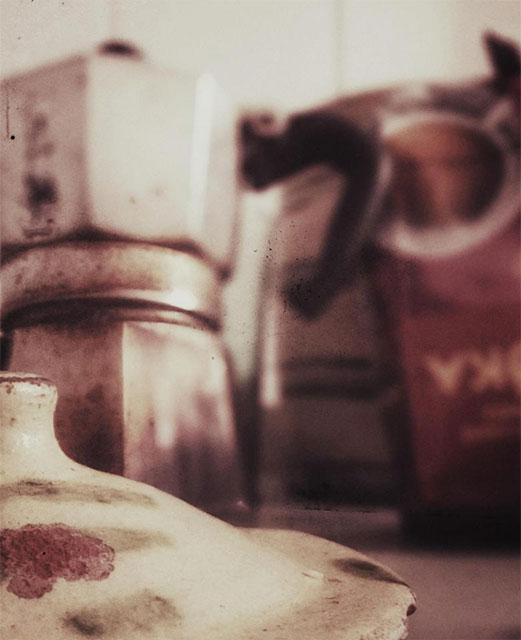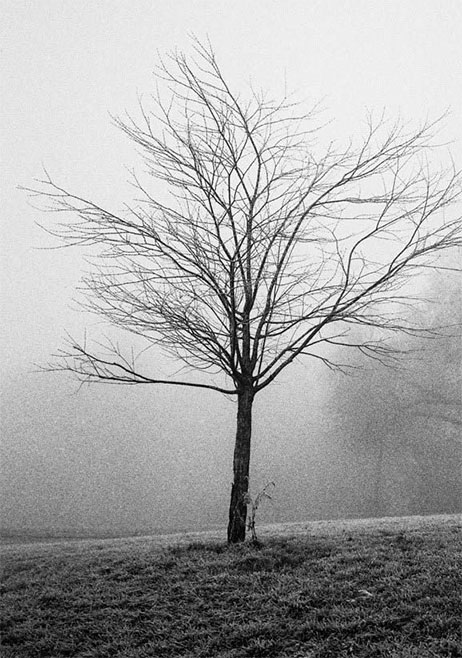Caffenol: developing photographs using coffee

We know coffee is enjoyable and how it does good to human health, but one would imagine that it can… show photos?
Although photography today is as simple as a click on our cell phone, up to twenty years ago it was an expensive and clearly more difficult process, requiring a film - ilm that, of course, had to be processed.
Photography, from its appearance until today, is one of the arts that literally goes hand in hand with science and its evolution. In the early 2000s, in the years of the death of analogue photography, a new method of development began to spread to the circles of "hip" analogue photographers, based on the appearance of photographs in a home-made, coffee-based solution: Caffenol !
 Caffenol's origins
Caffenol's origins
Caffenol is an alternative method of developing black and white film, in which the solution used to make the film and create the negative is based on the combination of phenols, vitamin C and carbonated soda. The invention of Caffenol was made at the Rochester Institute of Technology in 1995, when Dr Scott Williams instructed his students, in the course of a project, to find an alternative to developing black and white films using only objects and substances that could be found in any household.
In this way, students at the lab found that caffeic acid, which is present in large quantities in coffee and in tea, could be used as a developing agent, but its pH needed stabilization, provided by baking soda. Although the first trials were disappointing, the addition of Vitamin C had impressive results in the quality of the image produced - and that is how the Caffenol solution was born.
How does Caffenol work?
Undeveloped film contains silver ions which have been exposed to light. For the appearance of the film, that is, the creation of the negative image, a series of chemicals interact with the ions in order for the image to begin to stabilize. Caffenol replaces the basic chemical used in film making, commonly referred to as "developing agent".
The Caffenol look requires the same equipment (darkroom) as the conventional development process, and can only work on traditional, black and white film, as color film requires specialized equipment and more chemicals. The results are very good, despite their "amateurish" character and they improve even more with a little experimentation. In some cases, it leaves a hint of sepia coloring in the photos, which for some photographers is even desirable.
 Caffenol quickly spread across the world of film photography
Caffenol quickly spread across the world of film photography
Caffenol has become widespread in the online photography community in the early 2000s. Despite the gradual abandonment of analog photography and the rise of digital cameras and mobile cameras, photography hobbyists have continued to engage in analog photography, developing most of their films on their own. their films. Especially in the subcultures of Lomography and Lo-Fi Photography, photographers used to (and still are) used to looking for unusual techniques that most often have the character of "DIY", which has created the ideal conditions for the rapid dissemination of caffenol, as well it is handmade, cheap and definitely an alternative to the usual.
Communities of coffee photographers have enthusiastically cultivated the new habit, standardizing recipe and display technique, often drawing charts on fluid temperature, display time, and used film that have nothing to ency of the jealous of a professional. The method has gained tremendous success in the world of alternative analog photography, where photo exhibitions began to be organized with works that had appeared exclusively with coffee!
From then on, the issue began to become practical: the companies that produced the relevant solutions began to close, and the products concerned became quite expensive and infrequent. For many photographers, the appearance of coffee began to become one-way.
What's the Caffenol recipe?
To develop photos using coffee, we need the following simple materials:
- 1 lt clean water (20 c)
- 23 gr cooking soda
- 16 gr vitamin C
- 44 gr instant coffee
Carefully mix the materials so that all solids dissolve completely - otherwise oyur photos will be full of annoying marks. Use the solution as you would use a professional solution, depending on the type of film and its sensitivity. Unlike commercially available chemical solutions, Caffenol is harmless, and can be disposed of after use in the sink or toilet without any problems, and the unpleasant odor of chemicals is also absent.
Analog photography is undoubtedly dead long, but there are hobbyists and passionate photographers around the world who are still searching for something of the magic of our childhood photos. If you belong to them, keep a little coffee aside for your unique, artistic photos!










